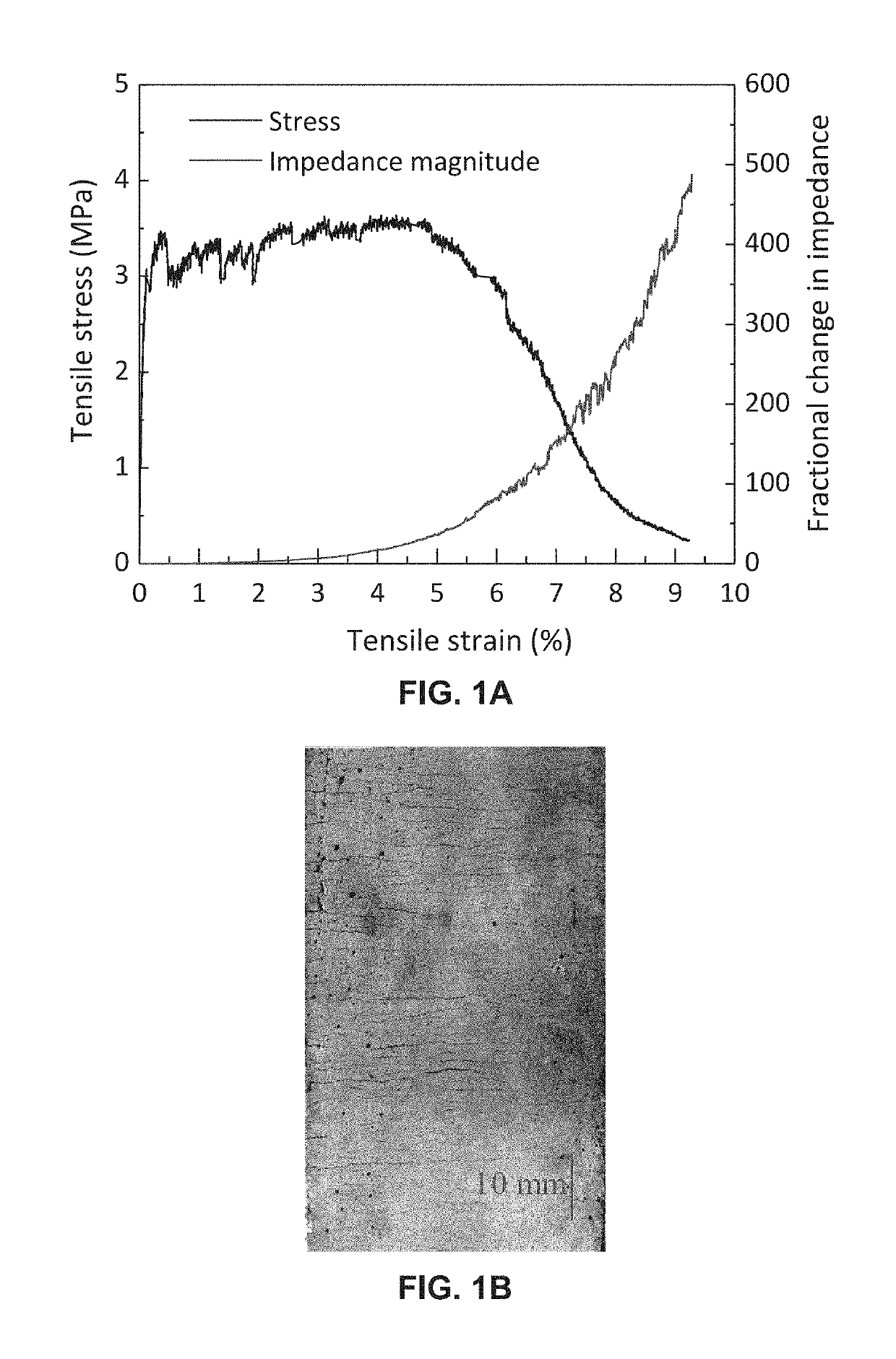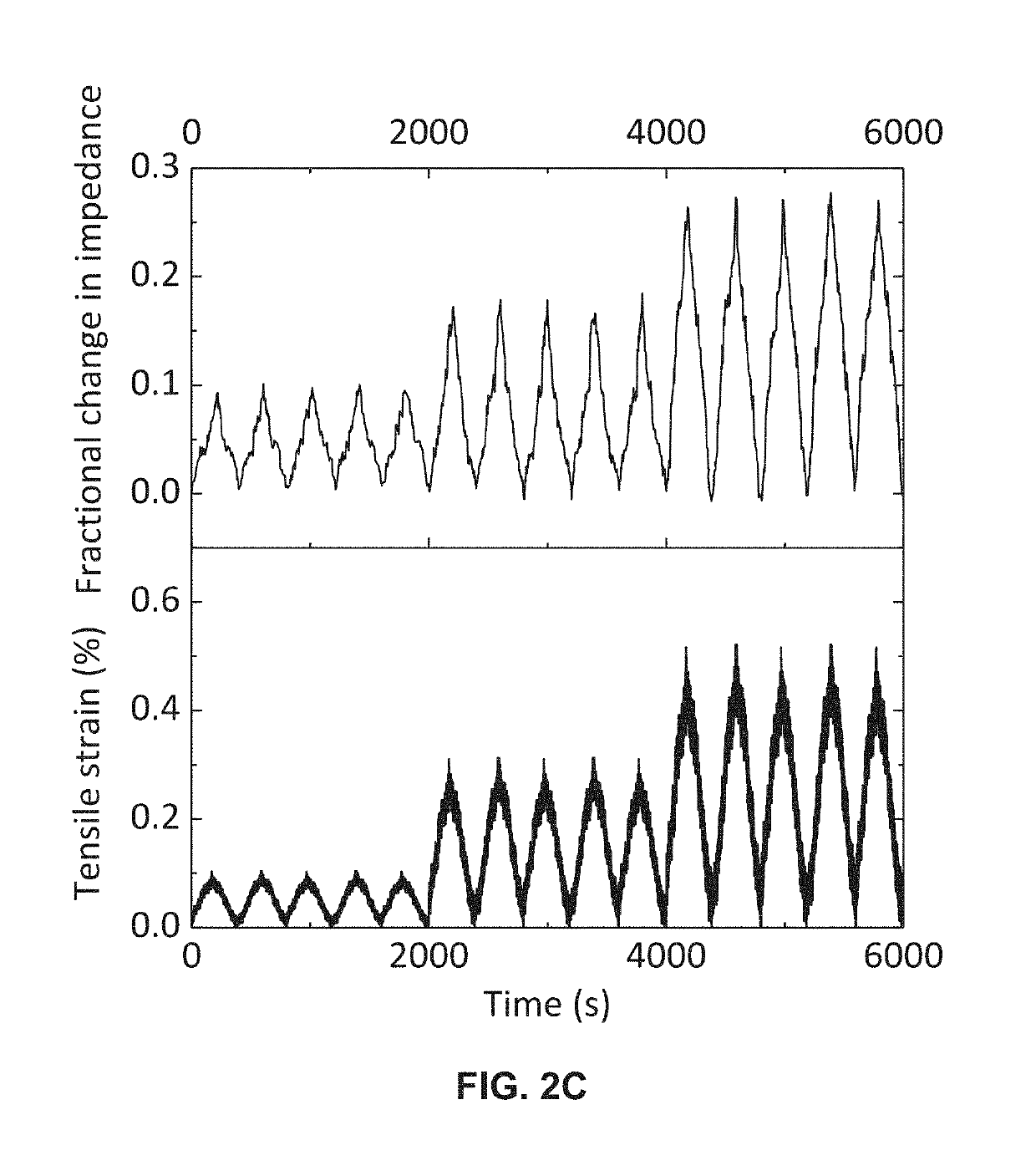Multi-functional cementitious materials with ultra-high damage tolerance and self-sensing ability
a cementitious material and multi-functional technology, applied in the direction of ceramicware, solid waste management, sustainable waste treatment, etc., can solve the problems of high risk of fracture failure, cracking, deterioration and damage, and high difficulty in detecting cracking, deterioration or damage in concrete,
- Summary
- Abstract
- Description
- Claims
- Application Information
AI Technical Summary
Benefits of technology
Problems solved by technology
Method used
Image
Examples
example 1
[0098 Design of Strain-Hardening Cementitious Composites.
[0099]The high-performance damage tolerance of MSC is achieved by transforming the brittle behavior of cementitious materials to a ductile behavior similar as metals under tension. Under tension, the MSC material exhibits pseudo-strain-hardening behavior (FIG. 1A) accompanied by the sequential formation of multiple microcracks (FIG. 1B). This is in contrast with the brittle behavior of concrete with localized cracking formation. Each of the small stress “drops” on the stress-strain curve corresponds to the formation of a micro-crack that leads to a release of energy. The material design was achieved by integrating ingredient proportioning, rheology control during processing, and nano- and micro-structure tailoring. The cementitious matrix cracking behavior and the fiber / matrix interface were engineered through the nanoparticles and pozzolanic ingredients to dissipate energy through steady-state crack propagation and multiple m...
example 2
[0101 Effect of CB Nanoparticles on Material Electrical Microstructure and Parameters.
[0102]FIGS. 4A-4D data suggest that the strongest piezoresistive behavior can be achieved at around 5% CB content for a particular cementitious mix design. Beyond 5%, the decrease in R2 slows down and the increase in C2 becomes much faster (note the log scale), indicating that further increasing CB content reduces partially conductive paths by converting them into conductive paths. This study revealed the critical role of partially conductive paths, showing that strong electromechanical behavior can be achieved at an optimal range rather than the highest amount of CB nanoparticles.
example 3
[0103 Effect of CB Nanoparticles on Material Tensile Behavior.
[0104]Direct uniaxial tension tests were conducted on coupon specimens with the initial mix designs shown in Table 1. The tests were performed at a fixed displacement rate of 0.0025 mm / sec. The specimens were gripped at both ends by the testing system with a gripping length of 51 mm. Two LVDTs were attached to the sides of each specimen with a gauge length of 152 mm. FIG. 5 shows the measured tensile stress-strain curves. It was observed that the increasing amount of CB nanoparticles led to a decrease in material first-cracking stress, tensile strain capacity, and tensile strength. The first-cracking stress is defined as the tensile stress at which the first microcrack appears. The tensile strain capacity is defined as the strain corresponding to the tensile strength. Based on the average of three repeat specimens for each mix design, the tensile strain capacity decreased from above 5% to below 2% when CB nanoparticles we...
PUM
| Property | Measurement | Unit |
|---|---|---|
| particle size | aaaaa | aaaaa |
| diameter | aaaaa | aaaaa |
| diameter | aaaaa | aaaaa |
Abstract
Description
Claims
Application Information
 Login to View More
Login to View More - R&D
- Intellectual Property
- Life Sciences
- Materials
- Tech Scout
- Unparalleled Data Quality
- Higher Quality Content
- 60% Fewer Hallucinations
Browse by: Latest US Patents, China's latest patents, Technical Efficacy Thesaurus, Application Domain, Technology Topic, Popular Technical Reports.
© 2025 PatSnap. All rights reserved.Legal|Privacy policy|Modern Slavery Act Transparency Statement|Sitemap|About US| Contact US: help@patsnap.com



